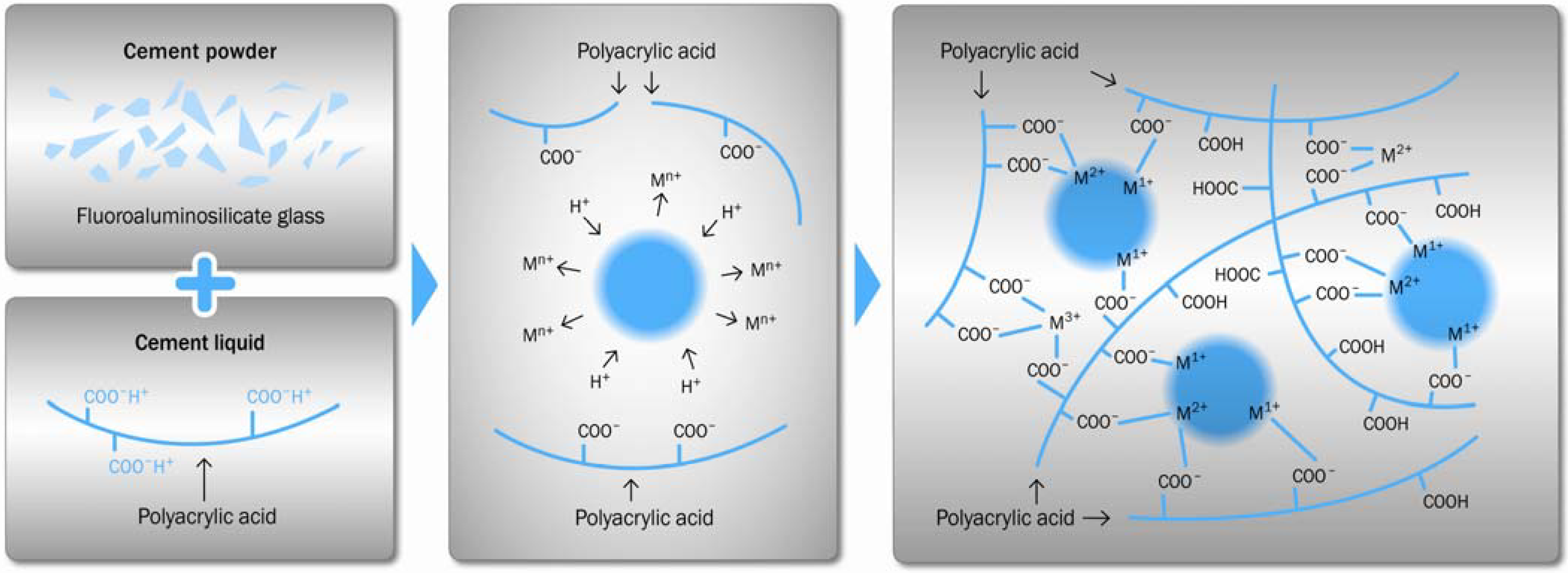| name | Glass Ionomer Cement |
| Classification | Dental restorative material |
| Pharmacokinetics | Glass ionomer cements do not have systemic absorption. They are directly applied to the tooth structure and form a chemical bond with it. No significant systemic effects are expected. |
| suggested dosage | Dosage is not applicable. Glass ionomer cements are applied directly to the tooth in a thin layer according to the clinical requirements of the procedure. Precise amounts depend entirely on the size and depth of the cavity, as well as the specific technique employed by the dentist. |
| indications | | 1 | Luting agent for crowns and bridges | | 2 | Class V restorations | | 3 | Base or liner for restorations | | 4 | Pit and fissure sealants | | 5 | Pulp capping |
|
| Safety in pregnancy | Limited data is available on the safety of glass ionomer cements during pregnancy. Generally considered to be safe in dentistry due to lack of systemic absorption. It is vital for patients to discuss any dental procedures with their healthcare provider during pregnancy to determine the appropriate course of action. |
| Safety in breastfeeding | Glass ionomer cements are not absorbed systemically and are considered safe for use during breastfeeding. However, as with any dental procedure, it's best to consult with the dentist and the patient's healthcare provider. |
| side effects | | 1 | Slight discomfort or sensitivity after placement | | 2 | Possible irritation of the gums in the vicinity of the restoration | | 3 | Post-operative sensitivity to cold and/or hot | | 4 | Allergic reactions (rare) |
|
| alternatives | |
| contraindications | | 1 | Hypersensitivity to the components of the glass ionomer cement | | 2 | Patients with severe bleeding disorders or those on anticoagulants (requires careful consideration by the dentist) |
|
| interactions | Glass ionomer cement has no known drug interactions. |
| warnings and precautions | | 1 | Appropriate patient education is essential before and after treatment | | 2 | Avoid biting or chewing directly on the restoration immediately after placement | | 3 | Follow up with the dentist for any post-operative issues | | 4 | Regular checkups and cleanings are essential for dental health and preventive dental procedures. | | 5 | Specific types of glass ionomer cements (such as the release of fluoride) may influence their usage and effect |
|
| additional informations | | 1 | Different types of glass ionomer cements exist with varying compositions and properties (e.g., fluoride-releasing glass ionomers). | | 2 | The specific type selected by the dentist will depend on the clinical needs of the patient. | | 3 | Important note: This information is for general knowledge and does not constitute medical advice. Consult with a qualified dentist for personalized advice and treatment. |
|
| patient specific details | | age | 25 years | | weight | 70 kg | | notes | No patient-specific considerations are needed for glass ionomer cement use with these parameters |
|

